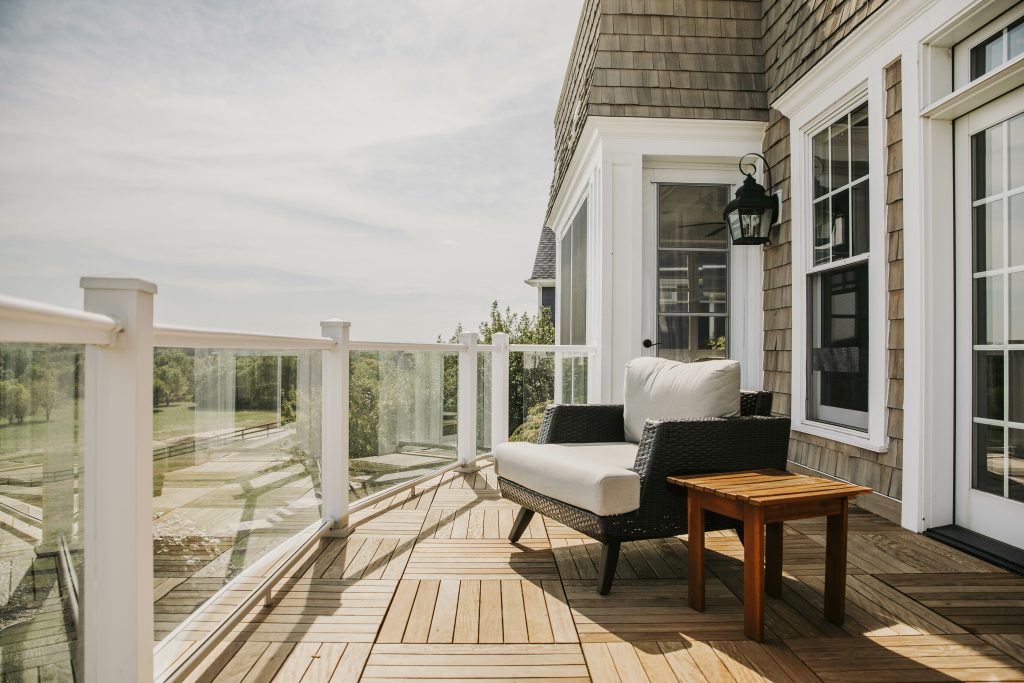Design a Patio That Feels Like an Extension of Your Home
There’s a big difference between a patio that just sits in the backyard and one that feels like a natural part of your home. The kind of space you want to use daily—for morning coffee, summer dinners, or relaxing with a good book. Too often, patios end up as disconnected zones that feel separate from the rest of the house, which can make them feel less inviting and inevitably underused.
When you think of your patio as another living area—not just outdoor space—you start to make smarter design decisions. The trick is creating visual and functional continuity between the indoors and out, so stepping outside feels as seamless as moving from your kitchen to your living room. That’s when your patio starts to feel like a true extension of your home.
So, how do you get there? It comes down to a few key elements:
- Prioritizing comfort.
- Creating a good flow.
- Choosing materials that match your interior.
Build with Intention—and the Right Materials
While furniture, layout, and materials help set the tone, the construction itself plays a quiet but essential role in how connected and usable your outdoor spaces feel. Covered patios, for example, can be designed with a roofline that mirrors your home—so instead of looking like an addition, it feels like it’s always been there. Even free-standing structures can feel anchored when they’re thoughtfully proportioned and placed.
Incorporating built-in features like an outdoor fireplace or kitchen can make your patio feel less like a backyard add-on and more like a space you actually live in. A fireplace creates a cozy focal point for cooler evenings, while a built-in grill or cooking area makes hosting feel effortless. These elements don’t just add visual appeal—they make the space more usable and tailored to how you spend your time, whether that’s cooking dinner outside, gathering with friends, or simply enjoying a quiet night by the fire.
If you’re looking to use the space beyond warm-weather months, enclosing a patio or porch for three- or four-season use can give you the best of both worlds—outdoor atmosphere with indoor comfort. With the right materials and a few extra upgrades, your patio can be just as inviting in October as it is in June.
Create a Smooth Transition From Inside to Out
The first step in blending your indoor and outdoor spaces is to think about how you move between them. That threshold—the literal doorway—plays a bigger role than you might think.
Wide openings make all the difference. Swapping out a single back door for sliding or folding glass doors can completely change how your home connects to the outside. Not only does this bring in more light, but it also makes your patio feel like part of the room it’s connected to. On warm days, you can leave the doors open to extend your living space visually and functionally.
Build Functional Zones, Just Like Inside
Every room in your home has a purpose—and the best patios do, too. Think of your outdoor space as a series of small “rooms” that each serve a function. This will not only make your patio more usable but it also makes it feel thoughtfully designed.
Break up the space into key zones:
- A dining area with a table and chairs near the kitchen entrance for easy serving.
- A lounging zone with cushioned seating and maybe even an outdoor rug for definition.
- A cooking or bar area if you like to grill and entertain.
- A fire pit or cozy corner for nighttime relaxation.
You don’t need a huge yard to do this. Even a small patio can have two or three clearly defined zones. Use furniture placement, planters, or subtle flooring changes to create boundaries, just like with open-concept interiors.
Flooring That Connects
One often overlooked element in patio design is the flooring. It might seem like an afterthought, but the surface under your feet helps set the tone for the entire space.
If your indoor floors are tile, look for an outdoor-rated tile in a similar style to extend the look. If you have wood floors inside, composite decking in a matching tone can carry that feeling through the patio doors. Concrete can also be finished or stained to resemble interior styles and colors. The goal here isn’t to match perfectly but to choose textures and colors that complement what’s already inside.
Creating that visual link between your indoor floors and patio gives the entire area a more continuous, intentional look. It also helps mentally bridge the space to feel like one larger area, not two unrelated zones.
Make It Work for How You Live
If you love having friends over for drinks and dinner, prioritize seating and an outdoor dining area. If you prefer quiet mornings with a book and coffee, design a peaceful nook with a comfy chair and side table. Don’t be afraid to skip features that don’t fit your lifestyle, even if they’re trendy.
Ready to Build the Perfect Patio?
A well-designed patio does more than expand your square footage—it expands the way you live at home. When the space flows naturally from the interior, includes thoughtful features, and reflects your daily routines, it can become one of your favorite places to be. Whether you’re starting from scratch or upgrading an existing space, the right design and build choices can make all the difference. Your outdoor space has more potential than you think—and we’re here to help you bring it to life. Contact Total Quality Construction today.
